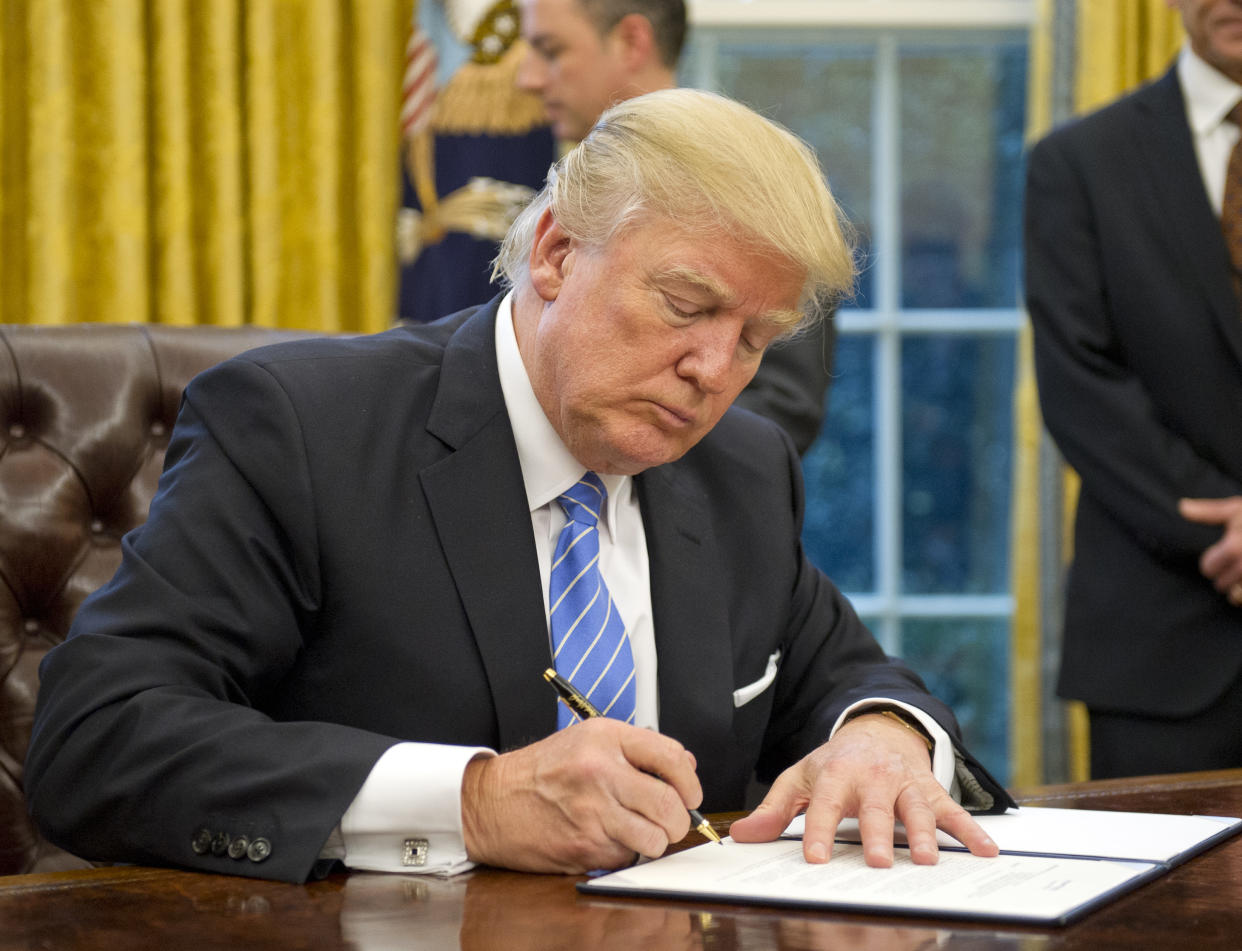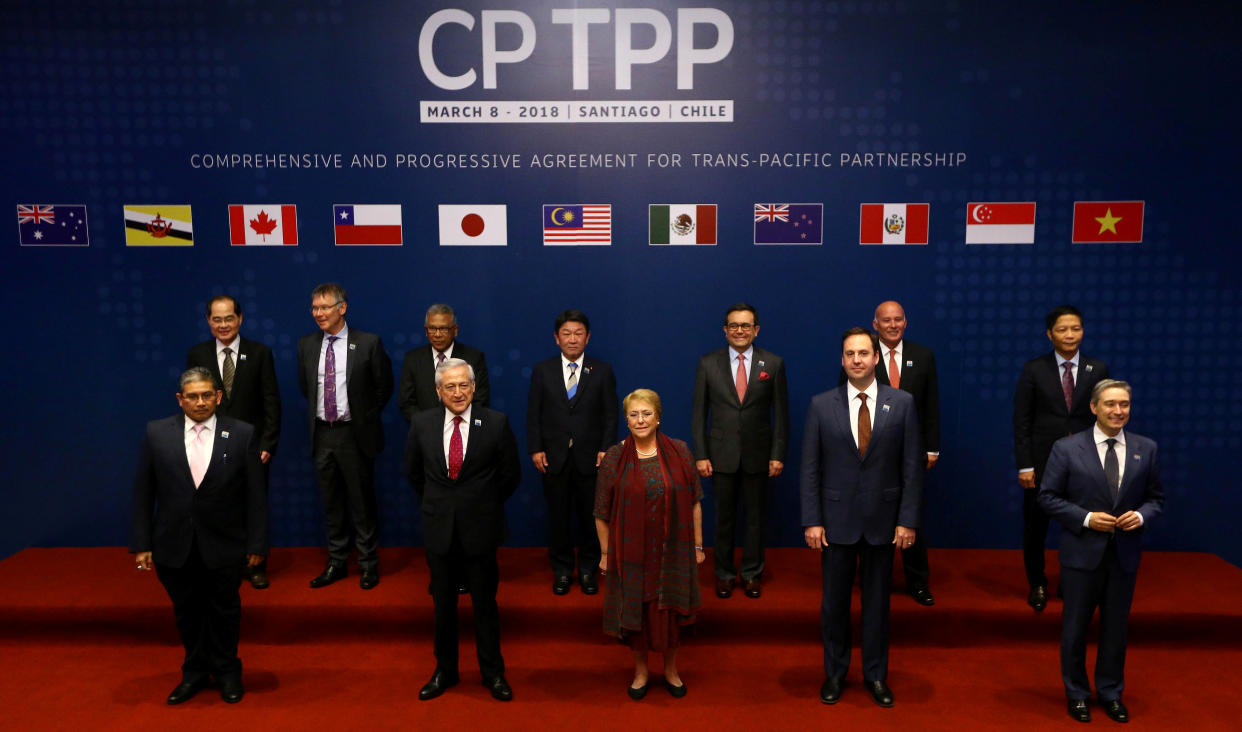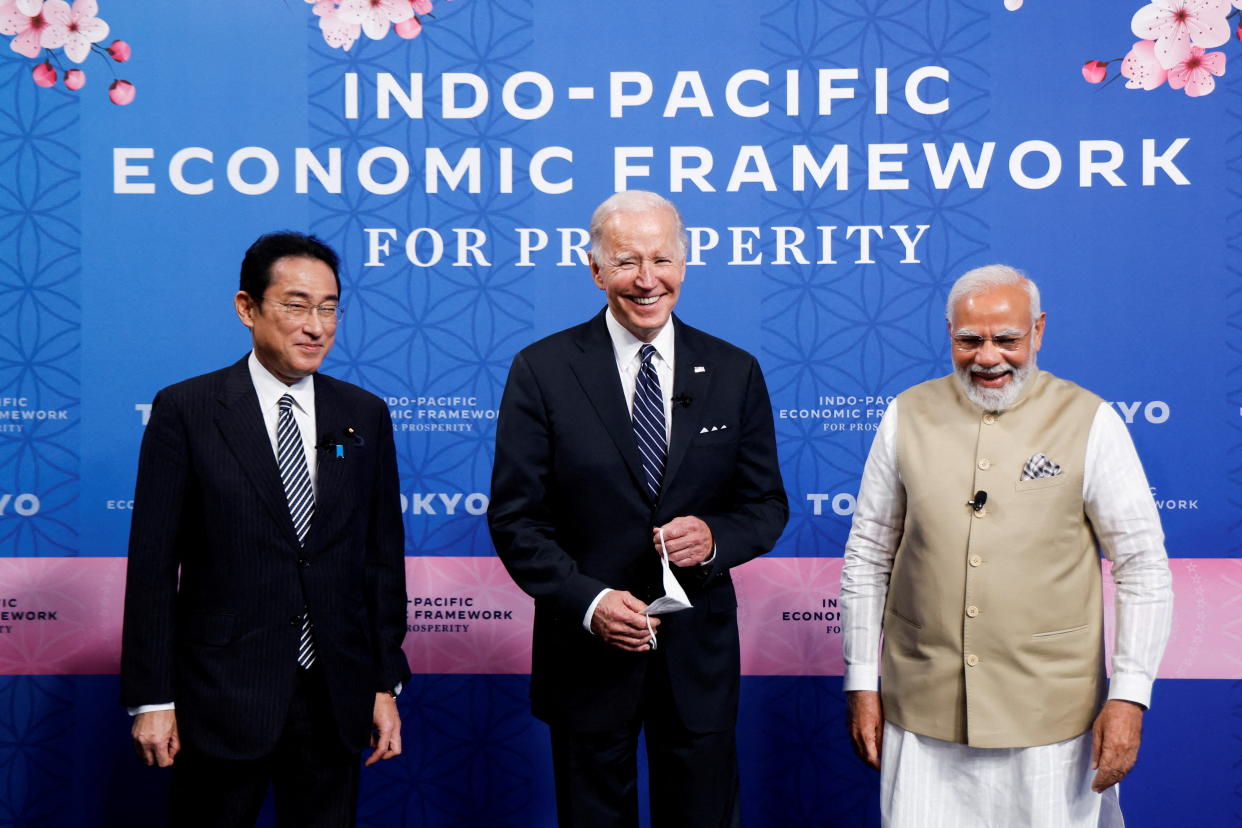U.S. ‘losing our economic competitiveness’ in Asia-Pacific region: Former Obama trade official
Nearly six years after former President Donald Trump withdrew the U.S. from the Trans-Pacific Partnership (TPP) free trade deal, former high-ranking officials are looking to win American lawmakers back to the table - this time, to get approval on a bipartisan level.
Authored by Wendy Cutler, Former acting Deputy U.S. Trade Representative under the Obama administration, and Clete Willems, Deputy Assistant for International economics under the Trump White House, the new plan proposes changes to what has now become known as the Comprehensive Pacific Trans-Pacific Partnership (CPTPP), in consultation with five Republican and Democratic lawmakers.
“We feel that things have changed in the region, in the United States since we withdrew from TPP six years ago,” said Cutler, Vice President of the Asia Society Policy Institute, in an interview with Yahoo Finance Live (video above). And frankly, we're losing our economic competitiveness in the region, as well as our economic influence in the region.”

First drafted in 2015, the TPP was signed by a dozen member states including the U.S., Australia, and Japan in 2016, with the aim of creating a significant trade zone to counter the growing economic influence of China in the region.
Specifically, the pact called for common rules in member countries, involving labor, the environment, and intellectual property, while reducing the tariffs buyers must pay on imported goods.
But the agreement quickly became a lightning rod on the left and right, with lawmakers opposing the deal on concerns it would hurt American workers and lead to further decline of U.S. manufacturing jobs. Trump officially withdrew from the deal in his first full week in office, reversing Obama’s signature trade achievement.
'We're losing out'
Five years on, Cutler argues the consequences of that decision have played in glaring view across the Indo-Pacific region. In the absence of U.S. leadership on trade in the region, China has moved quickly to secure its own pact, enacting the world’s largest free trade agreement, Regional Comprehensive Economic Partnership (RCEP) along with nine member states.
Meanwhile, the remaining 11 members of the original TPP have renegotiated a new agreement, CPTPP, representing roughly 13 percent of global GDP. This fall China formally submitted a request for entry into the trade pact, raising eyebrows in Washington.

“We're losing out from all the tariff cuts and supply chain connectivities these countries are forging through these agreements,” said Cutler. “I think it's something worth considering. I have no doubt it's going to be difficult. But I think it's time to restart that conversation.”
Reimagining the CPTPP
Cutler said the pact is unlikely to gain support from lawmakers without improvements and updates to a dozen critical provisions in the deal. That includes changes to rules of origin requirements that are key to determining duty-free eligibility, particularly for vehicles.
Current rules call for 45 % of parts to be sourced from CPTPP member countries, but Cutler and Willem argue that the number must be increased to 75 percent, to assuage concerns the agreement would undermine the U.S. auto industry.
Additionally, the new proposal calls for stronger enforcement of currency manipulation by member countries. Critics of the TPP argued that such actions by Japan, Malaysia, and Vietnam undermine commitments to market access and only add to U.S. trade benefits.
Cutler argues that the U.S.-Mexico-Canada Agreement, also known as NAFTA 2.0, provides a guideline for changes, calling for members to maintain exchange rates determined by the market, transparency and reporting requirements, and a requirement to hold annual meetings to monitor implementation.

Cutler also argues that the pact needs to enhance fairness in intellectual property rights protection and enforcement, and embed supply chain security and resilience into the agreements as a new chapter.
“It's going to be a tough road ahead. But I do have confidence given that the USMCA came into effect, voted on by Congress in a bipartisan way with a lot of votes. It gives me optimism about a TPP— a revised TPP for the United States in the future,” Cutler said.
We 'need to do more at home'
The latest proposal comes as the Biden administration looks to shape its own economic agreement in the region, wrapping up the initial round of in-person talks for the Indo-Pacific Economic Framework (IPEF) in Australia, where the 14 member countries represent roughly 40% of global GDP. While the IPEF is also designed to counter China’s growing influence in the region, Cutler argues that a revised CPTPP, with the inclusion of the U.S. is likely to be a more effective tool for Washington to reassert its policy in the region.
Akiko Fujita is an anchor and reporter for Yahoo Finance. Follow her on Twitter @AkikoFujita
Click here for the latest trending stock tickers of the Yahoo Finance platform
Click here for the latest stock market news and in-depth analysis, including events that move stocks
Read the latest financial and business news from Yahoo Finance
Download the Yahoo Finance app for Apple or Android
Follow Yahoo Finance on Twitter, Facebook, Instagram, Flipboard, LinkedIn, and YouTube
